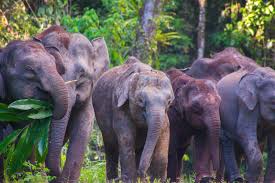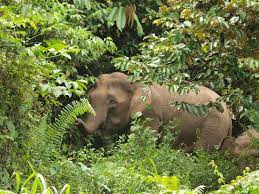
The origin of elephants in Borneo is unknown. Known for hosting the smallest elephants in the world, there are 2 theories as to how the elephants got to the island. The first is that they were released by a ruler in the 17th century (The most rapid population growth ever seen was 7,1% after the end of poaching in a reserve in Tanzania, a population of 30 elephants could become 1000 in just 50 years) – if this was the case, then their loss would not be bad; and the second is that actually the elephants arrived on the islands hundreds of thousands of years ago (as high as 300,000 years).
It is increasingly agreed that the second one of these ideas is likely to be correct. Though having said this, genetic analysis suggests that the whole population started with just 28 elephants.
Just 1000 are found on the island at the current time.
All wildlife on Borneo is at threat, as the palm oil industry continues to demand increasing quantities of prime rainforest be cut down. As this happens, elephants are forced into human areas, in their search for food, and then into conflict.
The Borneo elephant has only recently been assessed by the IUCN red list as a separate subspecies, but it is hoped that this recognition might increase tourism on this species as well as conservation dollars to save this species from its slow slide towards extincion












